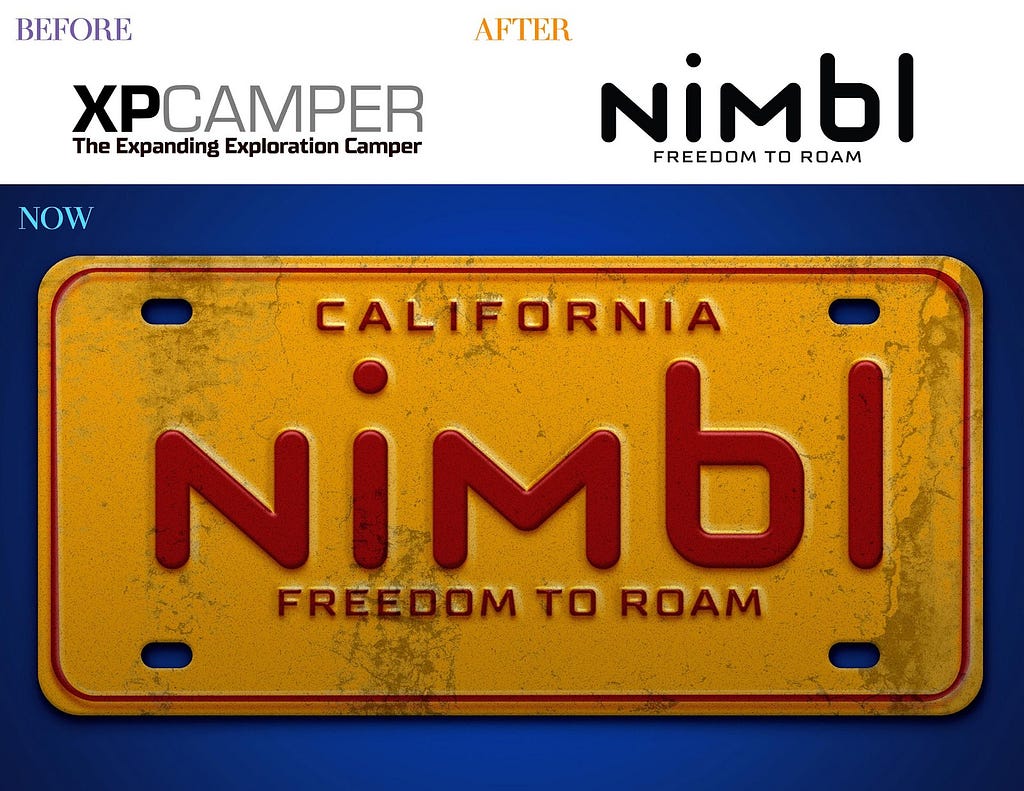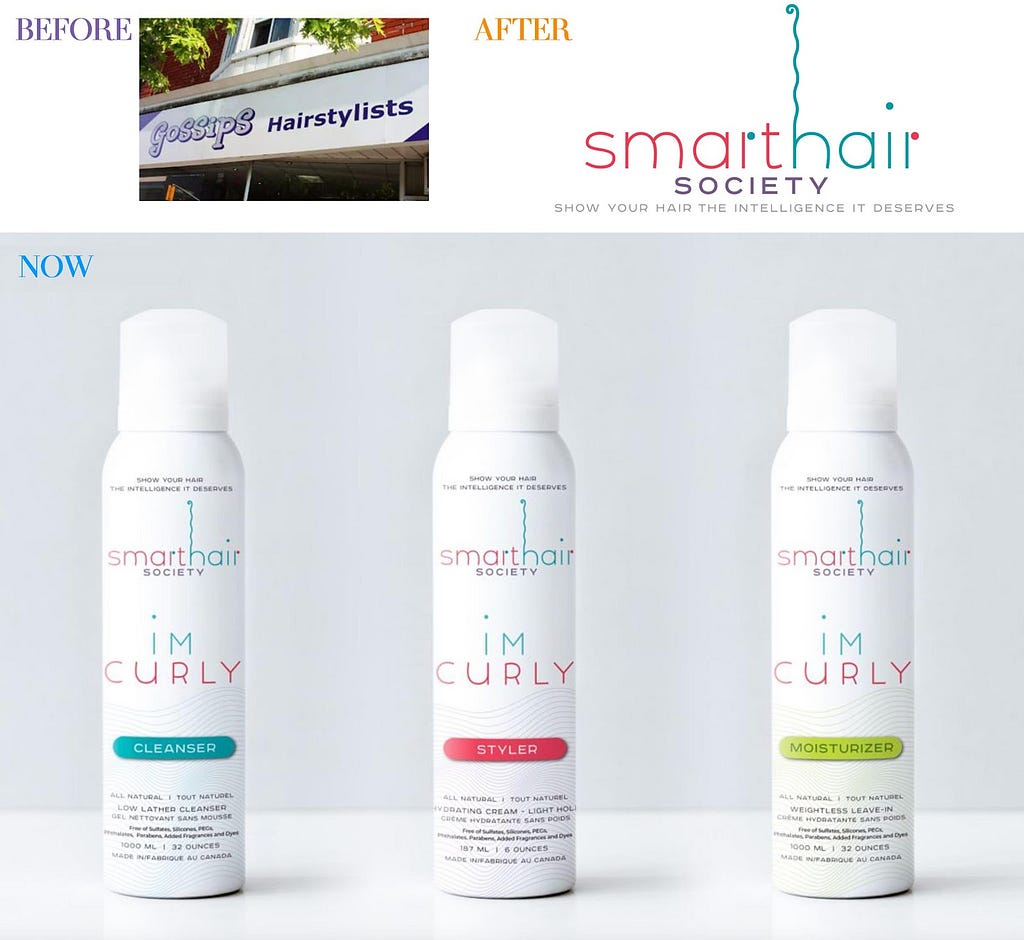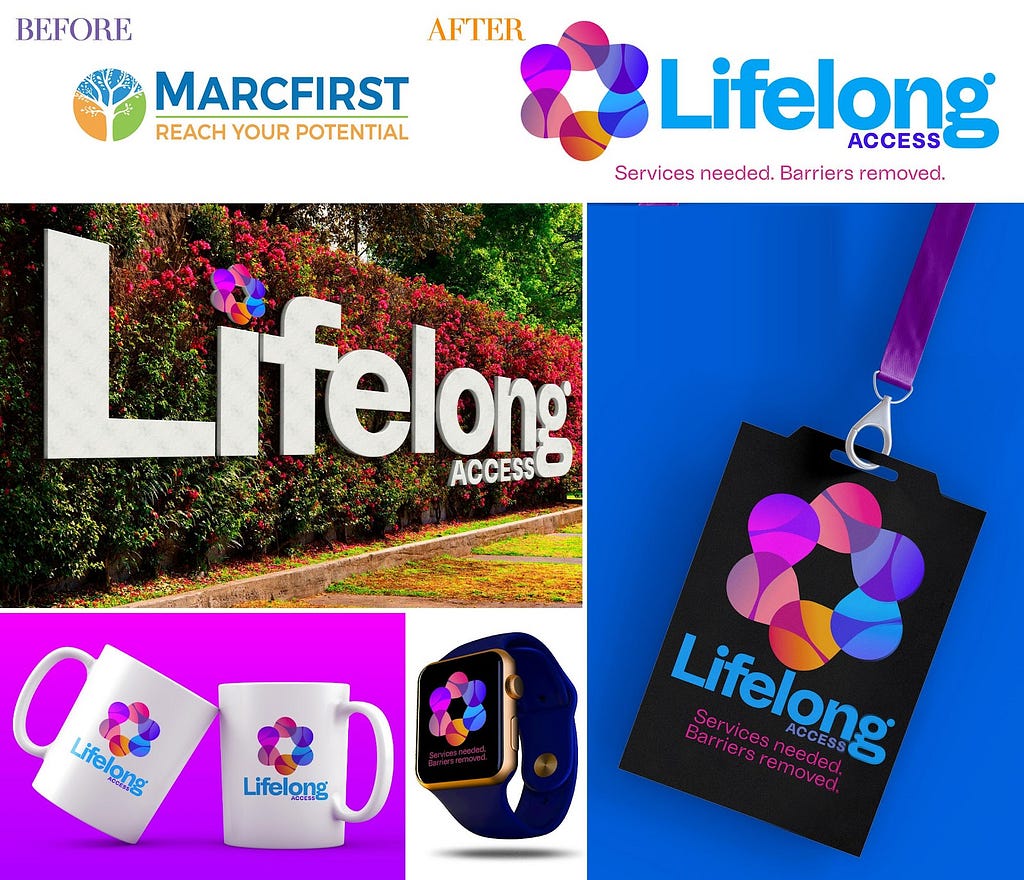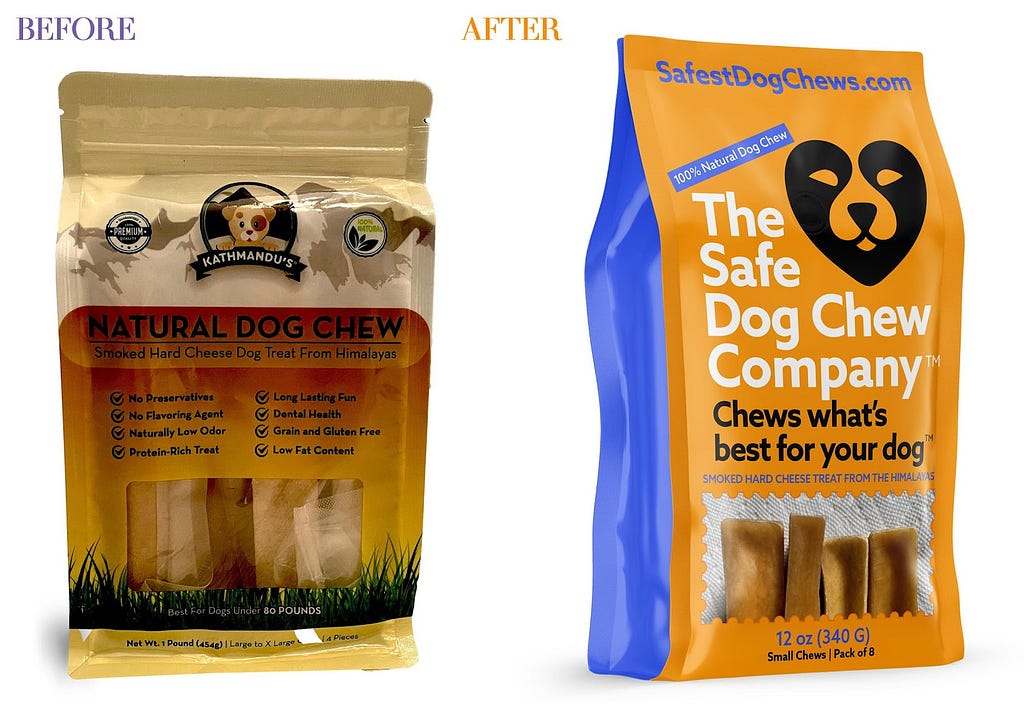Brand Makeovers: David Brier Of Rising Above the Noise On The 5 Things You Should Do To Upgrade and Re-Energize Your Brand and Image
People don’t come to new conclusions with old information, no matter how pure or passionate. Nearly every non-profit we reviewed was already stating what they were doing. All very worthwhile.
As a part of our series about “Brand Makeovers” we had the pleasure to interview David Brier.
Bestselling author of Brand Intervention and Google’s #1 ranked rebranding expert, David Brier’s rebrands have generated over $7 billion worldwide.
One of Google’s top-ranked rebranding expert, David’s four decades of branding expertise are sought after by companies of all sizes and celebrated by the elite of brand building like Shark Tank’s Daymond John who calls him “brilliant with branding.”
In addition to David’s work being featured in ADWEEK, Fast Company, Forbes, INC, Huffington Post, Entrepreneur, Thrive Global, the New York Times and numerous blogs and podcasts the world over, he is the recipient of over 320 international awards including the rare honor of being presented the Presidential Ambassador for Global Entrepreneurship medallion and publishes a weekly newsletter, The Brand Liberation Journal.
Thank you so much for doing this with us! Before we dig in, our readers would love to “get to know you” a bit more. Can you tell us a story about what brought you to this specific career path?
I was born in Brooklyn and grew up in Queens and started my career as a logo designer in Manhattan freelancing for ad agencies, some of New York’s top design firms, and corporations like Revlon, Estee Lauder, Jim Henson, and the New York City Ballet.
While I liked design, I found a real love in the editorial side of things really amplifying the meaning of words and stories being inspired by the design and stories of Rolling Stone magazine, Esquire, and U&lc and how, at that time, they used design to tell a story.
That led to the full spectrum of branding, using all the tools of design, typography, color, imagery and motion to open people’s minds and eyes.
Can you share a story about the funniest marketing or branding mistake you made when you were first starting? Can you tell us what lesson you learned from that?
There was one small boutique firm I freelanced at in Manhattan. It was a small 3-person firm and I was convinced they were “the shit” in terms of corporate design services.
I was a diamond in the rough. Lots of talent. Little discipline. So I thought more of my value than I probably was worth.
This got so bad that one day, I was given the task to prepare a presentation (before everything was digital) and I needed to cut a board. I ended up cutting the board to the size I needed it and failed to put anything underneath it to protect the expensive desktop counter I was cutting on.
I ended up permanently damaging the surface with a lovely cut straight across it because I failed to protect it. I was embarrassed and humiliated. I didn’t get fired but I also didn’t last there very long.
The lesson I learned (years later) that there is a BIG difference being confidence and arrogance.
Confidence is rightfully earned certainty. Arrogance is thinking you’re better just because you’re you.
Are you able to identify a “tipping point” in your career when you started to see success? Did you start doing anything different? Is there a takeaway or lesson that others can learn from that?
It was when I moved out of the Tri-State area to the Midwest where my wife is from.
I was doing fine in NYC and had my ups and downs.
I’d done some amazing things and had won hundreds of awards.
But I was a terrible leader and had made some bad choices in terms of people I’d hired.
My wife was a much better judge of character and assessing people’s value and reliability. She helped me “clean house” and essentially reset my business model.
That was the beginning of when things began to stably ascend into a consistent rise in quality of clients, fees, and scale of projects.
I focused on my core strengths which were building amazing brands with a balance of objectivity, an uncanny skill in connecting dots others missed, and bringing that all together into a compelling story and brand that helped make quite a few millionaires and few billionaires along the way.
The lesson I learned was the ability to decipher and hone my distinct talents was way more valuable to me and others rather than thinking I had to be brilliant at everything.
It was OK to be brilliant at a handful of things and that there is brilliance in recognizing what you’re not good at.
Are you working on any exciting new projects now? How do you think that will help people?
I love the projects I take on.
Because I am hired to enable business owners and CEOs to rediscover their brands.
It happens 100% of the time. I help them shed the “old ideas” they’ve been trying to keep on life support, and once they abandon those as outdated or no longer as brilliant as they thought they were, I am able to introduce new factors that make for a more exciting brand than they ever thought possible.
It’s like introducing them to their newborn child.
They’re elated. Shocked because (about 70% of the time), it was “hiding in plain sight” but they were too fixed with the old ideas to be able to see.
At any given time, I am working with 10–15 different companies or brands.
A couple of projects I am super excited about: I am working with a couple of global entrepreneurs and creating a brand that will change the face of business and culture on a mass level.
Another is an Australian technology brand that will have an enormous impact on Ecommerce globally.
I am also working on finalizing the follow-up to my bestseller, Brand Intervention, 33 Steps to Transform the Brand You Have into the Brand You Need. The new book will be called RICH BRAND, POOR BRAND — How to Unleash Your David in a World of Goliaths and the foreword is written by Claude Silver, Chief Heart Officer of VaynerMedia, Gary Vaynerchuk’s agency.
What advice would you give to other marketers to thrive and avoid burnout?
Burnout is the result of doing stuff you no longer love.
Either revive the love you previously had or find the thing that really rocks your world.
For me, the secret to thriving is to unselfish in sharing one’s wisdom.
There is a false belief that the only way to thrive and grow is to “save your best stuff for when they pay.”
That is a scarcity mentality. I have found people contract when they think they’ve lost the ability to create new value that will benefit others.
How poor is the person who no longer feels they can create?
That is your poorest person you know, no matter now much money they have in the bank.
Can’t create =
Must hold onto what they’ve already created, desperately.
Alex Hormozi said it best: “Give away the secrets. Sell the implementation.”
Ok, let’s now jump to the core part of our interview. In a nutshell, how would you define the difference between brand marketing (branding) and product marketing (advertising)? Can you explain?
This is an enormous confusion in businesses and wastes millions of dollars in desperate marketing.
It works like this:
We first have to understand that selling is the harvesting of the seeds planted.
The next thing we must understand is that every sale made in the history of culture from the Stone Age forward had two steps that preceded every sale:
Two steps.
One was marketing (or advertising). That helped spread those seeds so people knew of them.
But prior to that was the make-break point: Branding.
Branding defined those seeds. Made it clear how they were different from all the other seeds being spread by others. It told why we should care.
I took one company and, in 12 months after rebranding them, they saw a 28.5% increase in sales without increasing their marketing or ad spend one dime.
How was this possible? Because you can’t solve a branding problem with a marketing solution.
Yet companies do this all the time.
Without branding being nailed down first, marketing is only “paying and praying” that something will stick.
The same thing happened with a city I’d rebranded. Twelve months after the rebrand, they saw a 500% increase in tourism, using the same marketing budget they had been using.
No business can expect to shift their impact if the foundation, their branding, is off because marketing will only be suing the worn ammunition to win the battle.
Shooting more of the wrong ammunition does not win the battle. It only uses more ammunition.
To put it another way, having nothing insightful or useful to say doesn’t become more valuable or effective when you repeat it more frequently or say it more loudly.
If anything, it will likely get you escorted to the door more rapidly.
Can you explain to our readers why it is important to invest resources and energy into building a brand, in addition to the general marketing and advertising efforts?
Branding is the art of differentiation.
One factor escapes most businesses: Different is better than better.
Look at any pitch, or watch a few episodes of Shark Tank, and what will you hear?
“How are you different from what’s out there?”
That is one of the first questions asked.
Because customers recognize differences.
If a product or service appears similar or identical, it will be left to compete on price. Why?
Because value is synonymous with differentiation.
No difference = you’re seen as the same.
If you’re seen as the same, why should anyone switch?
No knowing this, some companies use price as their only differentiator: “We’re cheaper” which is the lowest form of brand building.
Let’s now talk about rebranding. What are a few reasons why a company would consider rebranding?
Rebrands are inevitable.
The common reasons for rebranding are:
- The market landscape has advanced a lot, and your brand has lost its relevance,
- There are “old preconceptions” about what your brand is, and the world needs to be reintroduced to who you are today,
- You’ve been pigeon-holed with something you used to do, 20, 30, or more years ago, and a bold reintroduction is needed to “awaken people” to what your business really is today, and
- Cultural or technological shifts have made major shifts and your brand, your name, and your reputation are no longer assets but liabilities.
The common wrong reasons for rebranding are a new CEO comes in and he or she has an itch to “change things up.”
Other times, it’s a reaction to what companies see their competitors are doing. “They’re changing so we should too.”
The worst approach to initiating a rebrand is to think of it as lipstick: some little cosmetic touch-up which won’t last or endure.
Are there downsides of rebranding? Are there companies that you would advise against doing a “Brand Makeover”? Why?
Brands that have lots of “baggage” (bad PR, consistent misfires, or poor customer service), a rebrand won’t fix that as it would be considered a surface change (like the META rebrand was for Facebook).
Since rebranding as Meta, Facebook’s parent company saw a significant financial loss, with its market value shrinking by an astonishing US$650 billion while Mark Zuckerberg saw his own personal fortune drop from $118 billion to $96 billion.
Additionally, brands that no longer have relevance will not be fixed up by “putting lipstick on a pig.”
It’s not like painting a room new color.
To clarify, lack of differentiation, or a crappy name, or a lousy culture will not be fixed by “a rebrand.”
Like Radio Shack which had the worst name, no clear market definition and was “anything to everybody.”
Or SEARS which lost all its meaning. Why go there?
Or a brand Batteries + Bulbs … I have no idea I would ever go to a store was based on batteries and bulbs. It makes no strategic sense to me.
Ok, here is the main question of our discussion. Can you share 5 strategies that a company can do to upgrade and re-energize their brand and image”?
In many cases, a rebrand is one of three things:
- A reset,
- A reframe, or
- A pattern interrupt if a brand has lost its relevance.
With those three identified, I have seen five strategies elevate a company from a struggling company to explosive brand.
- Work from Outside in
- Celebrate a lifestyle
- Create a New Category Hiding in Plain Sight
- Reassess Your Scope
- Make It Personal
- Work from the Outside In
In branding, it’s crucial to be more than the product we make.
There was a company in the raw dog food space made an amazing product. Yet sales had plateaued. Nothing they did changed it.
So we spoke and while they were interested in telling me the attributes of their product line, I was focused on who their customer was.
- What did they consider valuable?
- Where did they

- vacation?
- What did they do during time off?
Once I understood the lifestyle of their customer, I was able to recommend the new name and the new branding that changed how they spoke to the world.
This resulted in new merch, new enthusiasm amongst customers and a complete shift in how they were seen by customers.
This resulted in the first real growth in the following 18 months to almost 3X sales.
2. Celebrate a Lifestyle
XPCamper was a manufacturer of Expedition Campers for those who loved adventure and independence.
The only problem: The previous management had burned relationships despite a loyal following.
So a new brand was needed to distance itself from the prior ownership and to connect with a new customer.
This involved looking at the quality-of-life people envisioned after owning this camper.
As a result, the name was changed as well as the slogan and the overall brand aesthetic and story.
This grew them into a $10+ million-dollar company within a couple of years of relaunching the company.

3. Create a New Category Hiding in Plain Sight
After 4 decades of being a color technician and hair stylist, Mary MacDonald-Siddall focused on helping women with curly hair discover what was possible with the challenging locks they struggled to control.
After looking over what she was doing, assessing the crowded hair product industry, and finding her unique differentiator, we uncovered a category nobody owned: Smart Hair.
Why Smart Hair? Because Mary endlessly is educating (and re-educating her clientele on what to do and more importantly, what not do with their hair).
The result was not only a brand new category but a community, hence Smart Hair Society — a space she and her clients could own with more growth for her business than all the gorgeous locks of hair her clientele could now manage on their own.

4. Reassess Your Scope
Marcfirst, a 68-year old non-profit, had reached a crossroads where they needed to really look at their role.
They were very successful, helping people in need and financially solvent.
The problem was, how do we rapidly pealing who we are, what we do, and gain greater traction?
Marcfirst did not need to redefine what they were doing because people of one crushing insight:
People don’t come to new conclusions with old information, no matter how pure or passionate. Nearly every non-profit we reviewed was already stating what they were doing. All very worthwhile.
It wasn’t more facts pounded into people’s heads. It was a new conversation that needed to happen.
We directed Marcfirst to do this instead: reframe the more significant problem they were addressing to start having a new discussion.
In short, it wasn’t more organizations that were needed. It was organizations who knew the system that could effectively remove the roadblocks so the help they needed could arrive.
People needed an effective organization to remove the roadblocks.
How effective was this message? The first fundraiser they had that revealed the new brand raised almost a quarter-of-a-million in 30 minutes.

5. Make It Personal
I learned over the years of building brands to not walk around the elephant in the room, pull up a chair and become best friends with that elephant.
That’s what happened when a dog chew company came to me and needed a rebrand. Yak chews (I learned) were the safest dog chews available and one the definitive fears among dog owners was giving their dog a dog chew that could hurt them, or have pieces be swallowed that were harmful to the dog.
So instead of creating another dog chew brand that claimed to be a better option, we made it totally personal, renaming it The Safe Dog Chew Company taking the position of being a company that has taken on this personal interest of the dog owner.
And then we added some fun not only with the packaging but with the tag line, “Chews what’s best for your dog.”

In your opinion, what is an example of a company that has done a fantastic job doing a “Brand Makeover”. What specifically impresses you? What can one do to replicate that?
Originally a brand bought by middle-aged men, the Old Spice brand reframed the conversation in 2010 through hilarious viral marketing ads that would rope in the viewers of the younger set.
Their men’s grooming products date back in 1937.
The Problem
Old Spice, pre the campaign was pretty dull, boring branding that targeted the older generation of men.
There came the point when it began to look really stale, and look like “grandpa’s cologne” which is terrible positioning.
The Remedy
While they keep the name and logo the same, everything else was completely re-imagined.
The most dramatic shift? They would change entirely the tone of voice and positioning — the new Old Spice screamed that it was no longer unaware that it had become boring and uninteresting.
The now legendary first commercial, dubbed “The Man Your Man Could Smell Like,” started online before moving to TV, first connecting with the younger internet median age the company sought to impress.
It starred actor/former footballer Isaiah Mustafa engaging in a conversation to the audience with ingeniously transparent dialog and punchlines set in random settings.
It was funny, weird and managed to come up with such ridiculous amount of buzz almost literally out of nothing.
Simply, Old Spice took any sense of seriousness out of its image, and we all loved it by elevating its own amount of self-awareness and not taking what it discovered too seriously.
You are a person of great influence. If you could inspire a movement that would bring the most amount of good to the most amount of people, what would that be? You never know what your idea can trigger. 🙂
To create a global alliance, a consortium of sorts (some call it a cohort but a consortium in my mind is more taking those who have made it and been successful, and aligning those talents and skills for a greater united influence and impact) and using to harness the best talents, the brightest minds, and in a spirit of GIVING provide a foundation and catalyst for further greatness generated in the world.
A little sprinkle of what TED talks does, a little of Y Combinator does, and some of what the better entrepreneurs in the world do.
Right now, there’s too many “isolated kingdoms” that, if united, could generate way more ability, way more talent and way more impact than what we’re currently doing.
Can you please give us your favorite “Life Lesson Quote”? Can you share how that was relevant to you in your life?
We are only as valuable as we help others. That has had the greatest impact upon me and allowed me to become devoured by my own achievements of PR. It’s help keep me centered and flowing OUTWARD.
I grew up in NYC where I thought talent was the greatest skill which would make me valuable, affluent, and happy. Unfortunately, that was imbalanced and one-sided.
This is why I love my wife, Sherry, because she is my rock in that regard and has helped keep me centered that way, as much as I have helped her in other areas.
How can our readers follow you online?
https://www.risingabovethenoise.com
https://www.linkedin.com/in/davidbrier
https://twitter.com/davidbrier
https://www.instagram.com/risingabovethenoise/
https://www.facebook.com/risingabovethenoise/
https://www.youtube.com/c/Risingabovethenoise
Free Saturday Newsletter: https://risingabovethenoise.com/landing/modern-brand-secrets/
Thank you so much for these excellent insights! We wish you continued success in your work.
Brand Makeovers: David Brier Of Rising Above the Noise On The 5 Things You Should Do To Upgrade and… was originally published in Authority Magazine on Medium, where people are continuing the conversation by highlighting and responding to this story.


